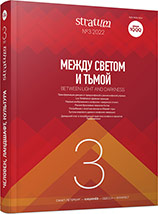Трансформация декора от предскифской к раннескифской упряжи: смена мировоззренческих образов
Transformation of Decor from Pre-Scythian to Early Scythian Horse Harness: a Change in Worldview Images
Author(s): Sergey B. ValchakSubject(s): History, Archaeology, Ancient World, 6th to 12th Centuries
Published by: Издательский дом Stratum, Университет «Высшая антропологическая школа»
Keywords: Eastern Europe; geometric ornament; zoomorphic ornament; horse bridle; pre-Scythian period; Classical Novocherkassk stage; Zhabotin stage; decor transformation; chronology;
Summary/Abstract: The article considers the transformation of ornament on the elements of horse equipment from the final stage of the pre-Scythian period to the beginning of the early Scythian. At the finale, classical Novocherkassk stage of the pre-Scythian period, some dramatic changes in art take place. In the traditional environment of pre-Scythian geometric art of southern Eastern Europe at the beginning of the 7th century BC, an absolutely alien system of zoomorphic images-signs is suddenly introduced. These changes occur against the background of the emergence of new types of bridle sets and some categories of weapons of Central Asian-Siberian origin, which form the “Zhabotin” military-horseman assemblage, fundamentally different from the previously existing “Novocherkassk”. As a result, it launches the process of fundamental changes in the social code of various groups of the pre-Scythian population of southern Eastern Europe. “Novocherkassk-Zhabotin” syncretic assemblage appears, some elements of which can be traced in the archaeological sites of the Kelermes stage of the early Scythian period not earlier than the last quarter of the 7th century BC.
Journal: Stratum plus. Археология и культурная антропология
- Issue Year: 2022
- Issue No: 3
- Page Range: 15-39
- Page Count: 25
- Language: Russian
- Content File-PDF

